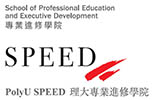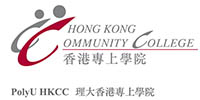雙語社評齊齊聽
[英語 (足本收聽)] Presented by Dr WEBSTER, Wing-sze Carol Louise, Lecturer of Hong Kong Community College, The Hong Kong Polytechnic University
[普通話 (足本收聽)] Presented by Dr PENG, Chien-hua Eva, Lecturer of Hong Kong Community College, The Hong Kong Polytechnic University
After a hiatus of nearly three years, the Hong Kong section of the high-speed rail link will officially resume operations on Sunday (15 January). Tour operators describe this as a shot in the arm and hope that business will gradually return. Hong Kong's tourism industry has been frozen for three years under the pandemic. As the mainland reopens its borders to normal travel, there are flickers of life at long last. The world has changed considerably since the beginning of the pandemic. To revive the tourism industry, Hong Kong needs new thinking. It cannot rest on its laurels and simply rely on shops and theme parks as its selling points.
For a long time since the COVID pandemic broke out three years ago, Hong Kong remained closed off, and the tourism industry was almost out of operation. In late September last year, Hong Kong put in place the "0+3" arrangement and gradually reopened to the outside world, bringing a glimmer of hope to the tourism industry at long last. However, the nucleic acid (PCR) tests on arrival and the risk of quarantine for those who had tested positive remained major obstacles to restarting the tourism industry. Reopening the borders with the outside world but not with mainland China could still not revive Hong Kong's tourism industry. Before the pandemic, tens of millions of travellers visited Hong Kong every year, and nearly 80% of them were from the mainland. Now, the mainland has finally fully reopened, and Hong Kong has almost entirely withdrawn its anti-epidemic measures, except mask rules. As the borders between the two regions reopen, the recovery of the tourism industry is around the corner.
Recently, the Financial Secretary and the Secretary for Culture, Sports and Tourism have pledged to revitalise the tourism industry. In addition to hosting major events, the Hong Kong Tourism Board (HKTB) will also step up its publicity campaigns targeting different tourist cohorts and markets. The board is soon launching "Hello Hong Kong", an over-HK$100 million global promotional campaign that involves collaboration with different organisations to attract tourists with free air tickets and other discounts.
No doubt packaging and gimmicks are necessary when it comes to publicity and promotion, but the most important thing is what is being promoted is itself attractive enough. Bolstering Hong Kong's tourism in terms of what it entails and how it feels is not something that the HKTB or a policy bureau can do going it alone. It requires close cooperation between government departments. In the post-pandemic era, Hong Kong's tourism industry faces a new environment and new trends. The revival of the tourism industry demands new thinking and new substance. It cannot be a facsimile of the pre-epidemic model.
Three years into the pandemic, Hong Kong and the world have undergone many changes in all aspects. Hong Kong's pace of reopening has been slower than its many competitors in the region. Some major events have relocated to other countries. Both the aviation industry and Hong Kong's international aviation hub status are to be rejuvenated. The SAR government must actively recover lost ground. For Hong Kong's tourism industry, mainland tourists remain the mainstay. However, the consumption and travel patterns of mainlanders are changing endlessly in recent years. It remains to be seen if shopping is still a valid selling point of Hong Kong, just like before the pandemic. Whether Hong Kong theme parks are now less attractive to mainland tourists is also a concern.
In terms of overseas tourists, it is estimated that tourists to Hong Kong will mainly make up of short-haul travellers from East Asia for quite some time. The return of long-haul visitors from Europe and the US will depend on how much the international aviation industry will have recovered and when Hong Kong will lift its mask rules. Many overseas tourists coming to Hong Kong will also visit mainland China, which is an important advantage for Hong Kong in attracting tourists. Despite recent disputes between China, Japan and South Korea over anti-epidemic measures, they are believed to be short-term. When the pandemic on the mainland stabilises gradually, the problem should be resolved.
旅遊業復蘇可期 賣點要推陳出新
高鐵香港段停運近3年,周日正式復運,旅遊業界形容是一支強心針,期盼生意逐步恢復。疫下本港旅遊業冰封3年,隨着內地重開恢復通關,終於再現生機。疫前疫後世界變化巨大,香港重振旅遊業,亦需要新思維,不能一味吃老本依重購物及主題公園作招徠。
新冠疫情爆發3年,本港長期處於封關狀態,旅遊業近乎停擺,直至去年9月底,本港實施「0+3」,逐步對外重開,旅遊業才初現曙光,然而入境核酸檢測以及陽性隔離風險,始終是重啟旅遊業的重大障礙;只通外地不通內地,本港旅遊業亦無法起死回生。疫前每年訪港旅客達數千萬人次,其中近八成是內地旅客。現在內地終於全面重開,香港防疫措施亦幾乎盡撤,只餘口罩令,隨着兩地恢復通關,旅遊業復蘇可期。
近日財政司長及文體局長均談到要振興旅業,除了主辦大型盛事,旅發局亦會針對不同客源及市場,加強宣傳推廣。局方稍後將啟動「Hello Hong Kong」全球宣傳計劃,投入逾億港元,與不同單位合作,提供免費機票等優惠,吸引旅客。
宣傳推廣當然要講包裝噱頭,但最重要還看內容是否夠吸引。充實本港旅遊內容和體驗,可不是旅發局又或一個政策局單打獨鬥便能處理好,必須跨部門緊密合作。後疫情時代,香港旅遊業面對的是新環境、新態勢,振興旅業要有新思維、新內容,不能照搬疫前一套。
疫下3年,香港與世界在各方各面都出現了很多變化,香港重開步伐較區內不少競爭對手遲緩,有大型盛事移師他國,無論航空業還是國際航空樞紐地位皆有待重振,特區政府必須積極作為,追回失地。對本港旅遊業而言,內地客仍是最重要支柱,然而這幾年內地人消費及旅遊模式亦在不斷變化。香港是否可以一如疫前,以購物「掃貨」作為吸客賣點,有待觀察;香港主題公園對內地客的吸引力會否下降,同樣令人關注。
海外客方面,未來一段時間,估計客源都是以東亞短途客為主,歐美長途客恢復情况,還看國際航空業復元進度,以至香港何時撤去口罩令。海外旅客來港,不少都會串遊中國大陸,這是本港吸客重要優勢,雖然最近中國與日韓因防疫措施起紛爭,但相信不會持續太久,等到內地疫情徐徐回穩,問題應可解決。
明報社評 2023.01.13







